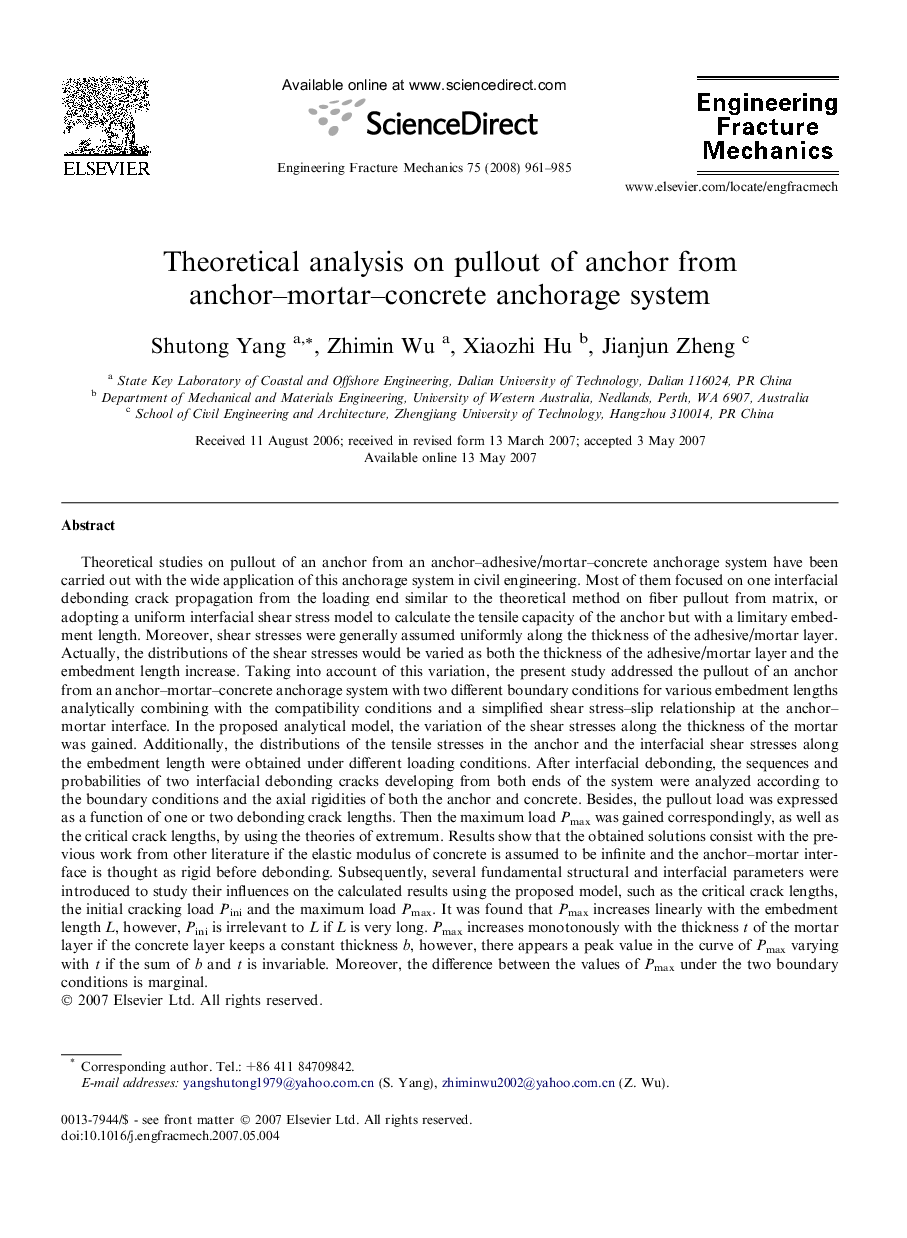| Article ID | Journal | Published Year | Pages | File Type |
|---|---|---|---|---|
| 771911 | Engineering Fracture Mechanics | 2008 | 25 Pages |
Theoretical studies on pullout of an anchor from an anchor–adhesive/mortar–concrete anchorage system have been carried out with the wide application of this anchorage system in civil engineering. Most of them focused on one interfacial debonding crack propagation from the loading end similar to the theoretical method on fiber pullout from matrix, or adopting a uniform interfacial shear stress model to calculate the tensile capacity of the anchor but with a limitary embedment length. Moreover, shear stresses were generally assumed uniformly along the thickness of the adhesive/mortar layer. Actually, the distributions of the shear stresses would be varied as both the thickness of the adhesive/mortar layer and the embedment length increase. Taking into account of this variation, the present study addressed the pullout of an anchor from an anchor–mortar–concrete anchorage system with two different boundary conditions for various embedment lengths analytically combining with the compatibility conditions and a simplified shear stress–slip relationship at the anchor–mortar interface. In the proposed analytical model, the variation of the shear stresses along the thickness of the mortar was gained. Additionally, the distributions of the tensile stresses in the anchor and the interfacial shear stresses along the embedment length were obtained under different loading conditions. After interfacial debonding, the sequences and probabilities of two interfacial debonding cracks developing from both ends of the system were analyzed according to the boundary conditions and the axial rigidities of both the anchor and concrete. Besides, the pullout load was expressed as a function of one or two debonding crack lengths. Then the maximum load Pmax was gained correspondingly, as well as the critical crack lengths, by using the theories of extremum. Results show that the obtained solutions consist with the previous work from other literature if the elastic modulus of concrete is assumed to be infinite and the anchor–mortar interface is thought as rigid before debonding. Subsequently, several fundamental structural and interfacial parameters were introduced to study their influences on the calculated results using the proposed model, such as the critical crack lengths, the initial cracking load Pini and the maximum load Pmax. It was found that Pmax increases linearly with the embedment length L, however, Pini is irrelevant to L if L is very long. Pmax increases monotonously with the thickness t of the mortar layer if the concrete layer keeps a constant thickness b, however, there appears a peak value in the curve of Pmax varying with t if the sum of b and t is invariable. Moreover, the difference between the values of Pmax under the two boundary conditions is marginal.
